What happens to history in a black hole? Abigail DeVille’s exhibition Only When It’s Dark Enough Can You See the Stars is a dense, massive force that ruptures the grand narrative of America and recasts it as a multiplicity. Through fecund accumulations of debris and detritus, DeVille, who was commissioned by Baltimore’s nomadic art museum The Contemporary, has transformed ten spaces in the Peale Museum into a temporal entanglement. As an interconnected complex, the past and present slip into one another. DeVille reinvigorates the Peale by unearthing the invisible bodies and silent voices of its previous lives.
There is no building in America like the Peale. Rembrandt Peale opened it in 1814 as the first edifice in the Western hemisphere designed and constructed as a museum. It served as Baltimore’s first city hall and later became the city’s first grammar school for black children. At another point it was filled with trash. From 1931 to 1997, it was reincarnated as the Municipal Museum of Baltimore. Since then, one of the city’s (and nation’s) most important buildings sat empty, until 2016, when DeVille refilled it with a myriad of refuse. The Peale, which faded from Baltimore’s cultural landscape, finds new purpose as a vestige of matter and memory.
In the museum’s antechamber, DeVille immediately establishes a framework for viewers: one of civil disobedience and struggle, of radical politics and protest. Climbing up the walls like kudzu, picket signs frame the exhibition’s ingress. They lack text and any sense of specificity. There is a politicized kinship with the work of Allan McCollum here – these signs of protest are surrogates for social action everywhere. Yet it’s impossible to divorce these objects from their immediate context. This is Baltimore: a flashpoint of Black Lives Matter activism, of uprising in the wake of Freddie Gray. Even though DeVille excavates the history of the Peale over the course of the exhibition, Only When It’s Dark Enough Can You See the Stars is also very much about today.
The first room viewers pass through is Colored Grammar School No. 1 1874-1888. In the center of the space a mannequin sits upright at a desk, wearing an Orioles hoodie, its face marred by mirrored shards. A reproduction of Cornell’s Primary Geography, a textbook from the 1850s that was likely part of the children’s curriculum, lies open-faced on the mannequin’s desk. This central tableau is surrounded by all sorts of material that refers back to the people of Baltimore: shoes dangling from the ceiling, sepia-toned photographs of families, and six-hundred slabs of slate. The stone palimpsests refer to the students’ writing surfaces, but they also point toward the ever-shifting function of the Peale itself: a somatic site in which history is continually performed, inscribed, erased.
We then meander through an imagined reconstruction of the first museum, replete with a cabinet of curiosities stuffed with taxidermy, a pile of ceramic rubble spilling out from the fireplace, and reproductions of portraits of the Peales. In Charm City Roundhouse (all works 2016), a tattered tarpaulin star-spangled banner blankets an entire wall. Sunlight filters through the red, white, and blue’s rips and holes. Ornate chandeliers found in the Peale’s basement hang above us. Piles of paper, turned shades of brown by time, are scattered throughout the space. As other critics have noted, DeVille impresses on the Peale an air of theatricality. Each room is like a stage set. However this is no Baroque reanimation of history for its own sake. Environments like Charm City Roundhouse recast viewers as active interlocutors with the past, creating reciprocity between then and now.
The title of the exhibition is a line from Martin Luther King’s speech “I’ve Been to the Mountaintop.” King offered his hopeful words in 1968, a time when the world seemed to be in total crisis. America’s crux today is a political one, and this country feels more polarized than at any point in recent memory. Less than six months out from the presidential election, the nation is divided between those who seek the restoration of an imagined American exceptionalism built on racial exclusion, and those hoping for inclusive alternatives. In a certain sense, this divide is predicated on the collective failure of many white Americans to acknowledge this country’s troublesome past as deeply knotted; so-called “progress” has occurred alongside the systemic marginalization of black and brown persons.
Only When It’s Dark Enough Can You See the Stars implores viewers to speak out against such inequities. With the addition of a bullhorn and a ladder, the Peale’s garden has been transformed into the Airing of Grievances. If a person is so inclined, they can climb a few feet up and shout at the bureaucrats in Baltimore’s city hall, only a few blocks away. On the second floor, in The People’s Theater, an open mic always remains turned on under the starry sky of a battered black tarp, waiting there for those who wish to declare, to voice dissent. Viewers are encouraged to become dialogists not only with the exhibition, but with history and the city of Baltimore.
The exhibition’s most disorienting space is the cosmic Black Whole. On the second floor of the Peale we find ourselves surrounded by five-hundred metal trash cans. After DeVille uncovered a nineteenth-century songbook during research, she asked composer Justin Hicks to create a score that would honor the school’s children. The result is Home Sweet Home, a cacophony of haunting voices that booms from the trash cans. The voices of the unheard are materialized. For the assemblage itself, DeVille implements the idea of the bottle tree, a folk practice meant to invoke the presence of the dead, underscoring the theme of reification. The result of all this material and conceptual accumulation is vertigo, compounded by the effects of blinding strobes and unknown objects tread underfoot through the cramped space. The weight of history is not simply alluded to, but felt.
Italian philosopher Giorgio Agamben posits that the true contemporary is one who “firmly holds [their] gaze on [their] own time, so as not to perceive its light, but rather its darkness.” DeVille assumes the role of Agamben’s contemporary through the metaphor of the black hole, an ineffable darkness. What, therefore, do we gain by gazing into the abyss DeVille has quarried? Are we, as beholders, left with a more complete understanding of our nation’s shadows? It’s difficult to avoid comparing Only When It’s Dark Enough Can You See the Stars to Fred Wilson’s legendary institutional critique, Mining the Museum (1992-3). Commissioned by The Contemporary over twenty years ago, the exhibition performed a kind of museological psychoanalysis on the Maryland Historical Society by delving into the deepest recesses of its collections and installing a series of object relations (a toddler’s Ku Klux Klan outfit placed in a baby carriage, period chairs facing a whipping post). As pioneering and necessary as Wilson’s project was, such art historians as Darby English have, with the benefit of critical distance, pointed toward the constraints of the show’s approach to identity as a stable entity. Not unlike Wilson, DeVille has us look deeply into the dark in order to reclaim scenes from forgotten eras and pierce constructions of nationhood that omit the experiences of black and brown Americans. Yet by virtue of its space-time compression, DeVille’s exhibition thrusts us into a fusion of disparate temporalities in which inflexible models of race and nation – the ones that have fueled the present resurgence of nativist identity politics in America – are exploded.
Let me posit, then, that we are hovering at the edge of an event horizon, and that our narratives about America are being stretched to the point of evisceration. The splendid black hole of history that is Only When It’s Dark Enough Can You See the Stars offers resolution by ripping apart narrow views of America, leaving DeVille’s ragged, permeable banner. And, by this immense force, a multiplicity of voices is heard. Alterity is grace.



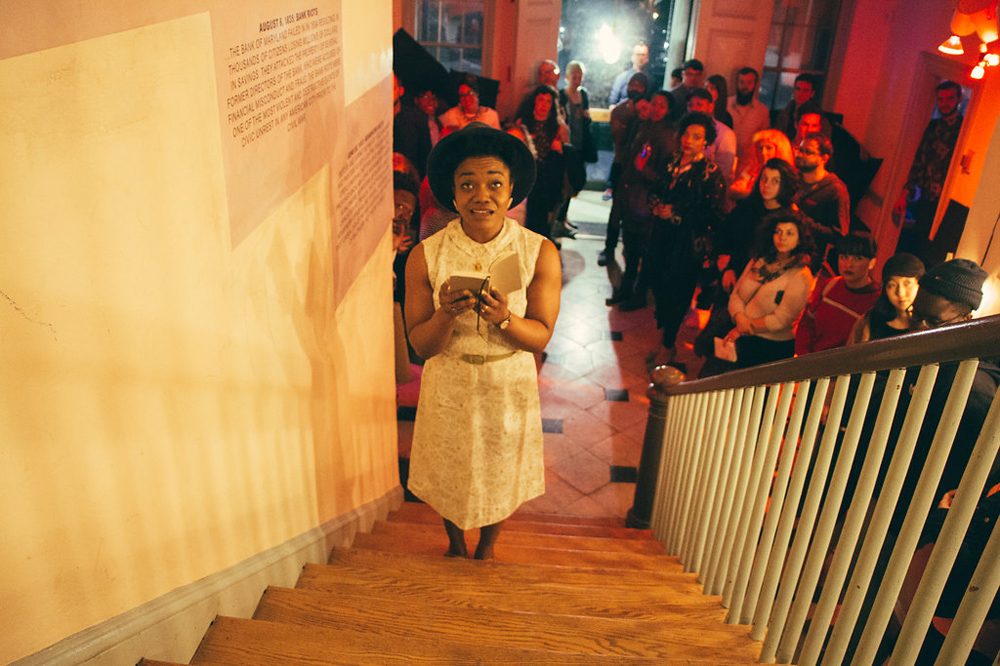
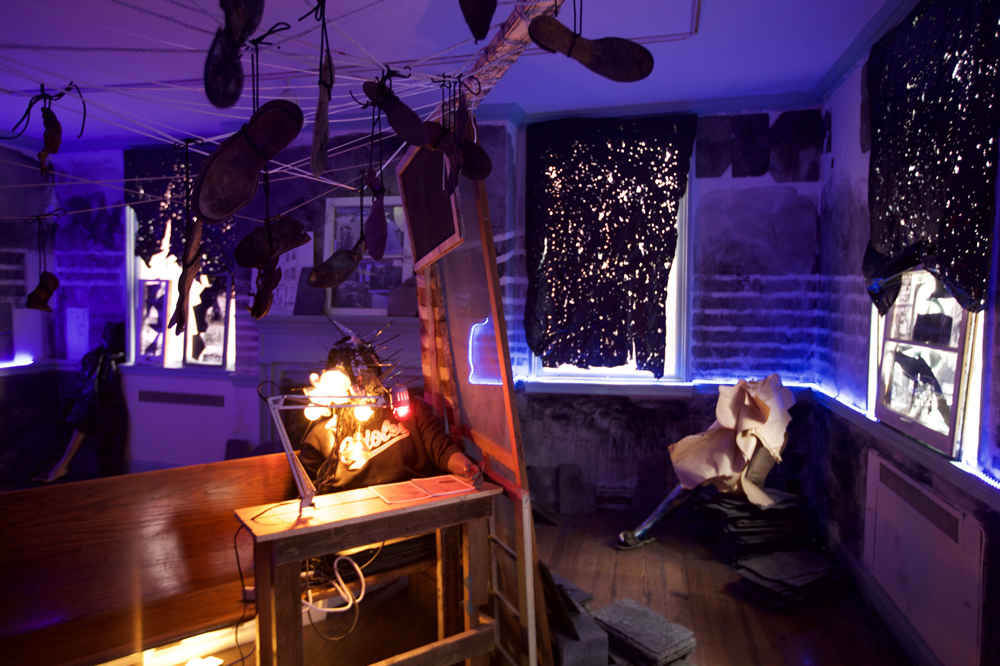
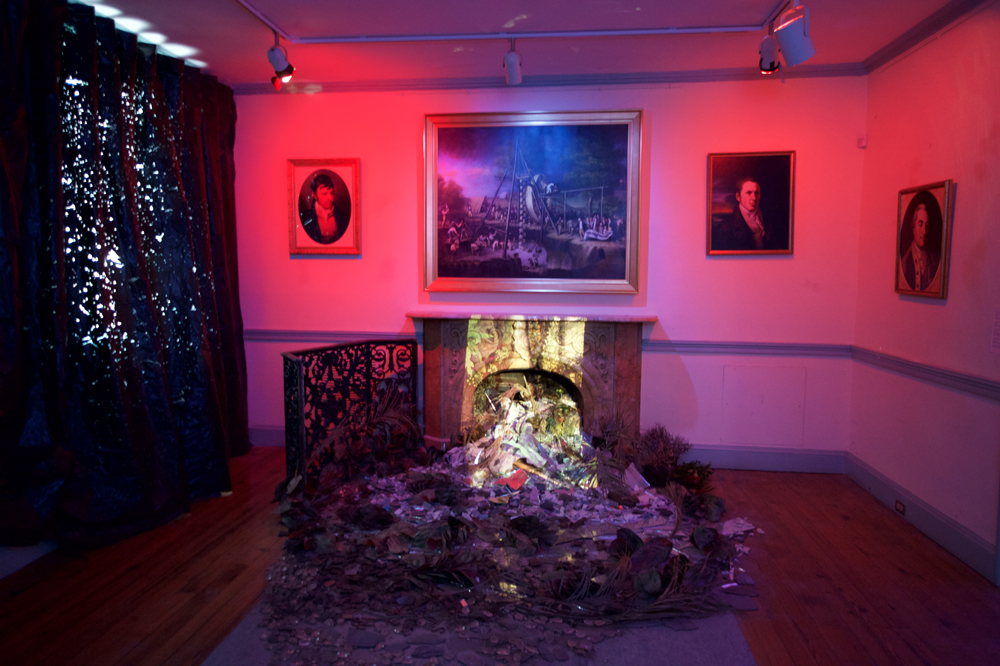














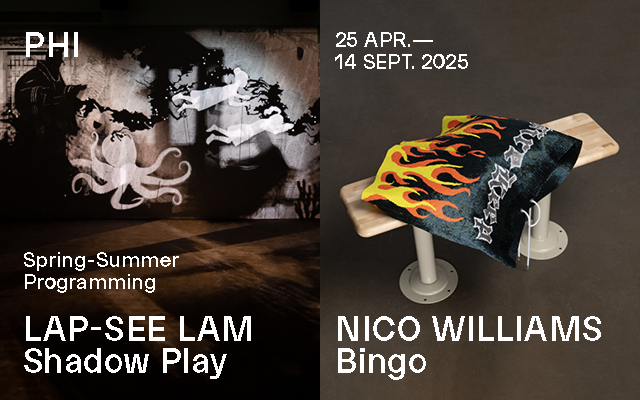
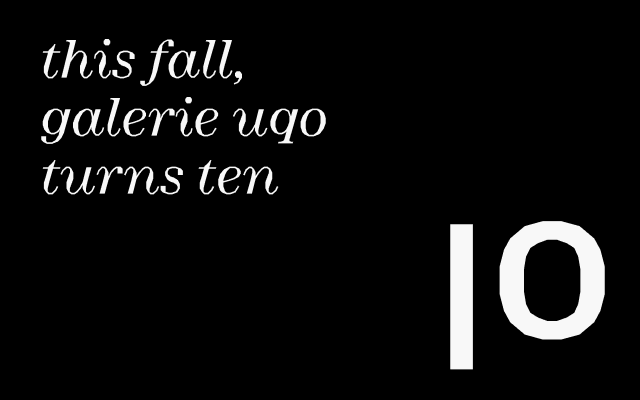

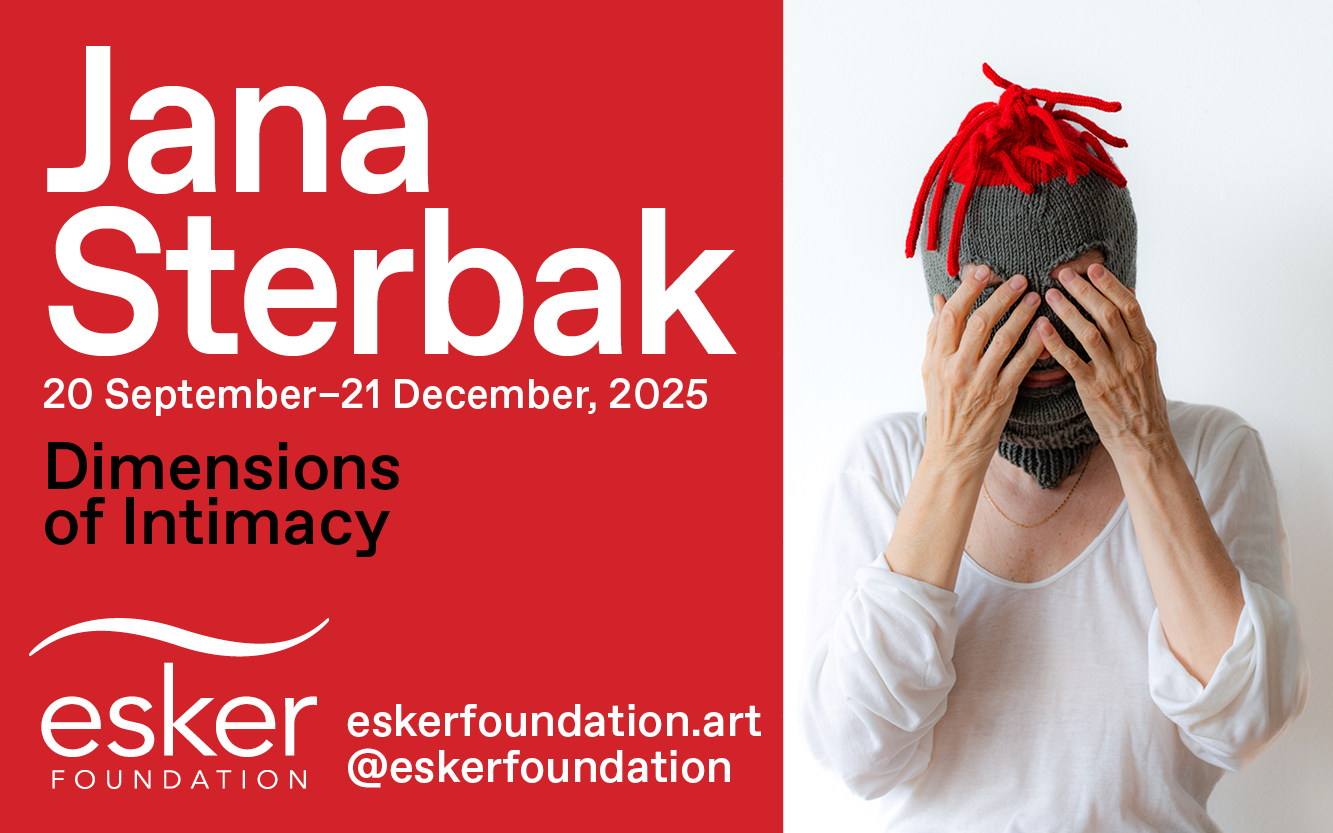
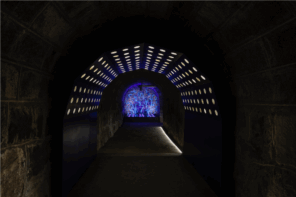
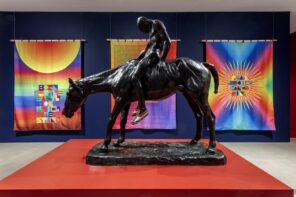
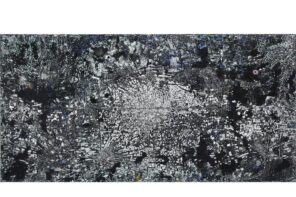
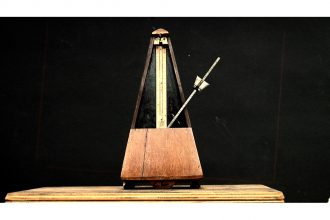
Beautiful piece!